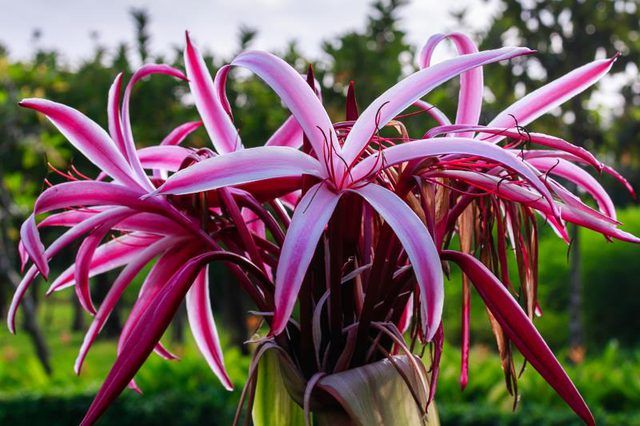Bulbs
Flower Basics
Flower Beds & Specialty Gardens
Flower Garden
Garden Furniture
Garden Gnomes
Garden Seeds
Garden Sheds
Garden Statues
Garden Tools & Supplies
Gardening Basics
Green & Organic
Groundcovers & Vines
Growing Annuals
Growing Basil
Growing Beans
Growing Berries
Growing Blueberries
Growing Cactus
Growing Corn
Growing Cotton
Growing Edibles
Growing Flowers
Growing Garlic
Growing Grapes
Growing Grass
Growing Herbs
Growing Jasmine
Growing Mint
Growing Mushrooms
Orchids
Growing Peanuts
Growing Perennials
Growing Plants
Growing Rosemary
Growing Roses
Growing Strawberries
Growing Sunflowers
Growing Thyme
Growing Tomatoes
Growing Tulips
Growing Vegetables
Herb Basics
Herb Garden
Indoor Growing
Landscaping Basics
Landscaping Patios
Landscaping Plants
Landscaping Shrubs
Landscaping Trees
Landscaping Walks & Pathways
Lawn Basics
Lawn Maintenance
Lawn Mowers
Lawn Ornaments
Lawn Planting
Lawn Tools
Outdoor Growing
Overall Landscape Planning
Pests, Weeds & Problems
Plant Basics
Rock Garden
Rose Garden
Shrubs
Soil
Specialty Gardens
Trees
Vegetable Garden
Yard Maintenance
How to Care for Spider Lilies
How to Care for Spider Lilies. Of more than 20 spider lily (Lycoris spp.) varieties, red spider lilies (Lycoris radiata) are the ones most commonly grown in home gardens, and with good reason. Sensuously curving, rose-red petals and starlet-eyelash stamens set their flowers apart from other late-summer blooms. Suitable for U.S. Department of...

Of more than 20 spider lily (Lycoris spp.) varieties, red spider lilies (Lycoris radiata) are the ones most commonly grown in home gardens, and with good reason. Sensuously curving, rose-red petals and starlet-eyelash stamens set their flowers apart from other late-summer blooms. Suitable for U.S. Department of Agriculture plant hardiness zones 6 through 10, red spider lilies flower in unison with their Amaryllis family relatives, Resurrection lilies (Lycoris squamigera) hardy in USDA zones 5 through 9. With proper care, they make an unforgettable impression.
When to Fertilize
Spider liliesí leaves photosynthesize food from late fall until they die back in late spring. Their underground bulbs store the food. After their summer dormancy, the bulbs send up leafless stalks that produce the red, late-summer flowers. When the flowers die, the leaves reappear. The lilies need fertilizing only twice a year, in very early spring to keep their foliage healthy, and after their flowers fade in autumn to boost their vigor and resistance to winter cold.
Choosing and Using Fertilizer
In spring, feed your lilies a high-nitrogen, granulated 8-2-4 fertilizer at the rate of 1/2 cup per square foot of soil. The nitrogen encourages lush foliage for maximum photosynthesis. After they've flowered in autumn, dose them with high-phosphorus, high-potash 3-5-4 bulb food. It boosts their vigor and resistance to winter cold. Use 1/2 tablespoon per bulb, or 1 cup per 10 square feet of soil. Apply either fertilizer evenly around the plants, keeping it 2 or 3 inches away from the leaves or stalks. Without disturbing the roots, work it into the top 2 inches of soil and water well.
When to Water and Mulch
Spider lilies may turn everything you thought you knew about watering garden plants on its head. Even if other plants are wilting in the summer heat, don't water your dormant spider lilies at all. Doing so is an invitation to bulb rot. The bulbs are so moisture-sensitive during dormancy, in fact, that the Texas A&M Extension suggests planting them out of range of your garden hose or sprinklers. In fall, winter and spring, rain or snow is usually enough to maintain the actively growing plants. If necessary, water at these times just enough to keep the top inch of soil consistently moist. Never water them enough to saturate the soil. A 2-inch layer of organic mulch such as ground bark retains soil moisture, and it also protects spider lilies growing in USDA zones 6 through 8 from freeze damage.
Potential Problems
Spider lilies have no significant pests or diseases. They donít need pruning. Their major ornamental drawback is that their foliage must yellow and die back naturally for their bulbs to produce the most flowers. Once the leaves disappear, your gardenís left with noticeable bare spots. Masking them with summer-blooming plants isn't advisable, because watering could damage the dormant bulbs. The most serious problem, however, is the toxic alkaloid lycorine found in the bulbs. Eating it causes digestive distress, shaking and excessive salivation. Keep an eye on pets and small children when they're near the plants.